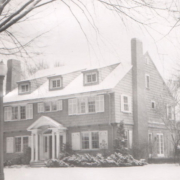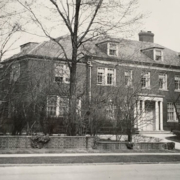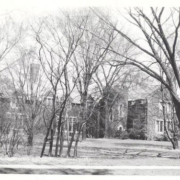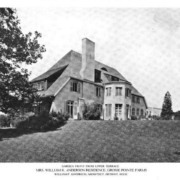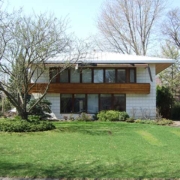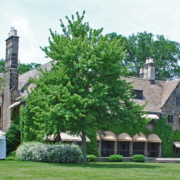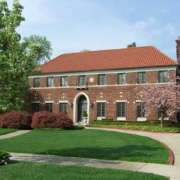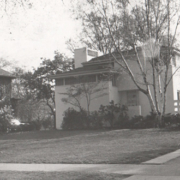Historical Architecture of Grosse Pointe – Rivard – Part 1
As with so many of the streets in Grosse Pointe, there is a rich, and checkered past. Many of the streets we have come to take for granted date back hundreds of years, and represent far more than just a street name.
Some of the older road names in Grosse Pointe are Rivard, Renaud, Vernier, Grand Marais, Provencal and Beaufait (to name but a few), which, you may have noticed, have a distinctly French theme to them.
During the eighteenth century the French occupied much of the farmland that was so important to the Grosse Pointe area. During this era it is believed the area was heavily wooded and swampy, however it proved to be a great area for farming. Many of the early farms generally had around 300 feet of water frontage, ran one – two miles inland, and were owned by some very familiar names (as mentioned above), that we now recognize.
One of the earliest French farmers to settle in the Grosse Pointe region was the Rivard Family. Having taken ownership of a ribbon farm in 1762 the Rivard’s were a prominent family in the community.
Shortly after moving to the area Jean Baptiste Rivard married a young woman of German descent and together they had 13 children. After the death of Jean Baptiste in 1805, two of his sons (Charles and Francois) managed the land, which was ultimately sold by Farncois’s son around 1852. According to research in the book Tonnanour – ‘The sale of the land coincided with the end of the French ribbon farm system. During this period, Wayne County began to divide into sections and the township of Grosse Pointe became independent in 1848’.
Today the Rivard name remains very prominent in the community and the street is home to many grand residences. Over the next couple of weeks we will be presenting some of these homes, starting with the earliest – constructed between 1918 and 1922.
Number 482 was completed in 1918, having been designed by the prominent firm of Stratton and Snyder. The 3,200 sq ft home is designed in a colonial architectural style with a clapboard exterior, and steeply pitched roof.
William Buck Stratton and Dalton J. V Snyder worked together between 1918-1925, and created several homes in Grosse Pointe including: 4 Woodland Place, 365 University Place, 341 Lakeland and 15366 Windmill Pointe.

482 Rivard

482 Rivard
Also built in 1918 was number 497, designed by the firm of H. H. Esselstyn and L. F. Murphy. It is an excellent example of a center entrance Dutch Colonial home with a clapboard exterior. This style was extremely popular in Grosse Pointe during this era, and is a rather striking design.

497 Rivard

497 Rivard
Built in 1919, number 487 was commissioned by Bernard Stroh Jr. (of the Stroh Brewery Company), and was also designed by Esselstyn and Murphy. The 5,261 sq ft is a wonderful example of a symmetrical clapboard colonial home, which was clearly a popular on Rivard during this era. The house is said to have wonderful interior features, including a stunning entrance hall (17’ x 12’), high ceilings and beautiful Pewabic and ceramic tile throughout.

487 Rivard

487 Rivard
Continuing with the work of Esselstyn and Murphy we take a look at number 502, also built in 1919, it is another excellent example of a large symmetrical clapboard Colonial home.
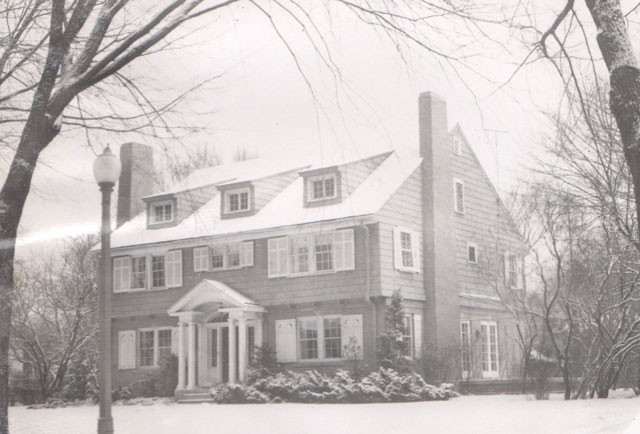
Marcus Burrowes and Frank Eurich built number 522 in 1922. It is a typical Burrows design – prominent triangular features on the front elevation, dominant chimney, and created in an English architectural style with a stucco exterior.

522 Rivard
Marcus Burrowes was an extremely accomplished architect in his own right, having designed many homes in Grosse Pointe throughout his career. In 1920 Burrowes joined forces with Frank Eurich (a graduate from Cornell University) and together they designed around ten homes in Grosse Pointe as well as several libraries and municipal buildings.
Also built in 1922 is number 430, designed by noted architect Charles Kotting. It is a striking English Tudor home, featuring 9’ ceilings, carved limestone fireplaces, and hand hewed wood beams

430 Rivard
Having gained the reputation as an incredibly skilled designer, Charles Kotting created over 100 structures in Metro Detroit. This included many homes in Grosse Pointe – solo projects and in partnership with Alphus Chittenden – you can read his story by clicking here.
As we travel along Rivard it is clear the architectural style continues to evolve, from clapboard colonials on the fist block through to English Tudors as we progress up the street.
We will continue with our exploration of Rivard next week.
*Photos courtesy of the Higbie Maxon Agney archives unless stated.
Written by Katie Doelle
Copyright © 2017 Katie Doelle

